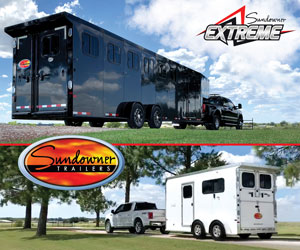THE COMEBACK COWBOY
Life after a traumatic brain injury is a new normal.
Story and photos
by Holly Clanahan
by Holly Clanahan
Clay Ashurst, a lifelong cowboy who had always made his living horseback, was just doing what cowboys do. It was July 29, 2017, and he was working as a pickup man, helping bronc riders at a ranch rodeo that was part of the local county fair in Lusk, Wyoming.
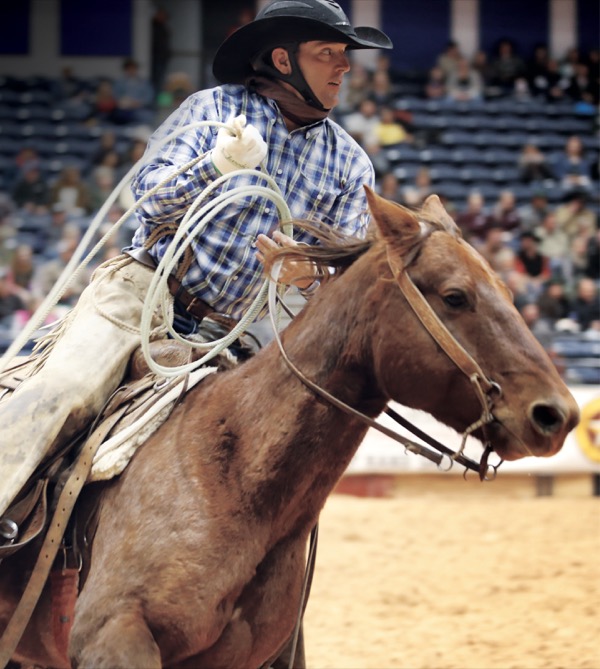
In 2017, Clay Ashurst came to the World Championship Ranch Rodeo in Amarillo as a spectator with an uncertain future after a devastating injury. By 2019, he had returned as a fierce competitor.
When the wreck happened, Clay says it didn’t look that spectacular. He doesn’t remember it, but a video fills in the gaps of his memory.
“The bucking horse turned and angled into my horse. I’ve watched it on video a hundred times, and it didn’t really look like much to me, personally,” Clay says. “YouTube is full of worse-looking wrecks. I’ve slowed it down, and what happened is the bucking horse hit my horse at the strong-point of his stride, in the weakest part of my horse’s stride. My horse had all four feet in the air.”
And with that, Clay’s horse went down, flat on his side.
“He didn’t roll over me or anything crazy like that – just knocked me straight over, and that was it,” he says.
If, in retrospect, the wreck didn’t seem too dramatic, the after effects certainly were, and those watching scrambled to help the motionless cowboy.
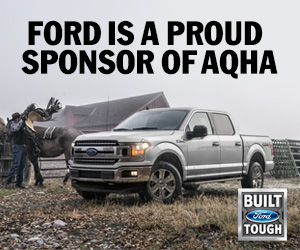
“Clay never moved, but he was sort of breathing,” his wife, Lexie, says. He was rushed to the local emergency room, where he was intubated and put on a medical helicopter to Casper, Wyoming, where a bigger hospital and more specialists were waiting.
The diagnosis there was sobering.
Clay’s brain stem had been sheared, or torn, and he had a global brain injury from the rapid deceleration of hitting the ground. His Glasgow Coma Score was 3, the worst possible, Lexie says. He could not open his eyes, speak or move.
“They told me that night that people with his kind of injury sometimes wake up in three weeks, three months … or never. If he did wake up, they thought it was possible that he would be paralyzed and not able to communicate.”
There were some long days of vigil and prayer in the intensive care unit, but “about four days into it, he started doing things that made us think he wouldn’t be paralyzed,” Lexie says. Although he couldn’t open his eyes yet, Clay would give a thumbs-up when asked questions that required a “yes” answer.

“I’ve never had a job where I wasn’t horseback,” Clay says. After a remarkable recovery from a traumatic brain injury, he’s able to continue his career, working as a cowboy for Four Three Land and Cattle in Lusk, Wyoming.
By the sixth day, he could breathe on his own, and when he opened his eyes for just a few seconds, Lexie saw her husband in there.
“I knew he was there. It was not a vacant stare. It was him,” she says. “I remember my friend saying, ‘I’ve never seen you so happy.’ When you’re in that situation, happiness is so fragile. To think you’re the happiest you’ve ever been because your husband is waking up.”
At first, Clay could only maintain consciousness for a few seconds at a time, but he steadily improved. After 12 days, he was transferred to the highly rated Craig Hospital near Denver, where he’d spend the next month in rehabilitation.
Lexie says that although the outlook was guarded, they were surrounded by amazing medical professionals who never gave up hope.
“His MRIs are very, very bleak,” Lexie says. A doctor who read them said, “There is no way this person is even interacting.” But, “At Craig, they’re all about getting you better. They’re like, ‘Let’s work hard and see what we can get.’ MRIs are great tools, medicine is great, but each case is unique. The MRI doesn’t tell the full story. Let’s treat the person, not the MRI.”
Now, hard work isn’t foreign to any cowboy, and it certainly wasn’t foreign to Clay, who grew up on some of Arizona’s biggest ranches, working alongside his dad, Ed, on the Babbitt and Diamond A outfits. Still, this was a tall order.
“In the beginning, we had a lot of conversations: ‘Maybe we can get through therapy enough that he doesn’t have to have a nurse’s aide.’ ‘Maybe he can take over some of the household chores like laundry,’” Lexie says. But Clay kept working, and the team at the rehab hospital was encouraging.

“With each passing week, they were really great about upping the ante,” Lexie says. “They’d say, ‘We were wrong, you can do more than laundry. Let’s try something else.’ When we left, he was walking independently. It wasn’t beautiful, but he was walking independently.”
As for being horseback again, that was still a big unknown. Maybe he could ride therapeutically? Or get on a dead-broke, bomb-proof horse?
After he graduated out of in-patient therapy, Clay and Lexie drove back and forth for 14 weeks, spending a few precious days a week at home with their boys, Miles, who’s now 15, and Grant, now 9. Then Clay and Lexie would drive another 320 miles to spend the rest of the week doing outpatient therapy at Craig, making slow but steady progress.
By November 2017, just barely more than three months after the accident, Clay was well enough that the family traveled to Amarillo to watch the World Championship Ranch Rodeo. Clay had been on a team that qualified for the championship, and he wanted to support his friends.
“I was only a couple of weeks out of being seat-belted in a wheelchair,” Clay says. He had competed in the championship ranch rodeo three times before, and he loved the camaraderie found there among like-minded ranch people.
At home, Clay continued with his therapy regimen, designed to improve his balance and reaction time. And although horseback riding is therapeutic, that was to be at his own discretion.
“In terms of the horses, they had just said, ‘Whatever you’re comfortable with,’” Lexie says. Many traumatic brain injury patients struggle with rationality and assessing risk, but Clay thankfully did not. His team trusted that he would know the right time and the right horse.
It turned out to be “Tiny,” a 21-year-old gelding owned by Four Three Land and Cattle in Lusk, Wyoming, where Clay had worked since 2012. In January 2018, Clay strapped on a helmet and got back in the saddle, walking and trotting around a small indoor arena.
The roping dummy was his next target. Clay, who was right-handed, had initially dealt with some right-side paralysis. Roping might not be easy.
“He caught three out of the first four loops he threw,” Lexie says. “We ran and got the ranch manager (J.D. Williams) to watch, as he has been a great friend and supporter through all this.”
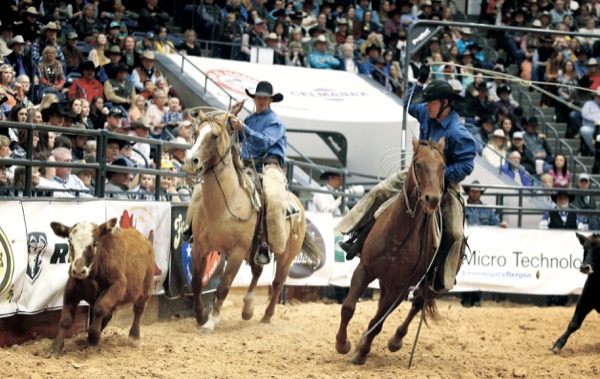
Roping here in the stray-gathering event, Clay appreciates the 8-year-old red roan gelding, TDL Cruzan McCues, owned by him and his wife, Lexie.
But here’s the thing: If you’re a lifelong cowboy who’s known to be handy with a rope, you’re not going to be satisfied with stopping there.
“I knew how to rope,” Clay says. “I knew I wasn’t doing it right. I roped the dummy quite a bit.”
Part of the problem was that his right shoulder had also been injured in the wreck, but that didn’t get addressed until much later.
“That was way down the food chain of things I was dealing with,” Clay says, “and didn’t even really know it at the time.” Sometimes his hand wouldn’t cooperate, and he’d turn the rope loose behind his head. With practice, and more practice, that seldom happens anymore.
By spring 2018, he was horseback more and more, and could even do a couple of hours of work in the mornings.
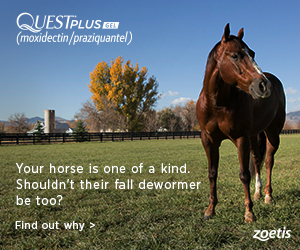
The ranch cows calve in May, and cowboys gather and brand in July.
“I could go and brand every morning,” Clay says. “I drug calves (to the branding fire) some. I would go in the morning and then sleep, take a big afternoon nap, and then get up and be functional enough to eat dinner and be up for very little time and then go to bed. I slowly got stronger and stronger.”
With a brain injury, mental fatigue can be a big factor, and Clay has found that to be true.
“Physically, I can outrun myself mentally,” he says. “When I get tired, my judgment is maybe not the best. You just get tired and crabby and not that functional, but I can still do stuff. I try to rest in the afternoon, which I don’t always get myself talked into doing. J.D. really tries to make me, so I don’t kill myself. He’s really good to us.”
Clay, now 41, is back in business, working as a cowboy, with just a few accommodations.
“I’ve made some changes in what I ride, mainly,” Clay says. “I always bought and sold horses. That was our extra income, and I generally bought horses that were unstarted or that had bucked somebody off … whatever was on sale was what I bought. And a lot of them were on sale because they had some issues, and I would just go to work on them. They would get better. And when they got better, I would sell them and buy another one that wasn’t better.”
Since the accident, though, “that’s not the type of horse I want to ride,” Clay says. “Once I’m on a horse, I feel super confident. I can ride whatever. But I don’t get on that good, and I don’t want to find out how good I can ride.”
He is still training and selling horses, though just about one a year. And, almost unbelievably, he is well enough to compete in ranch rodeos again. Actually, not just compete; he’s well enough to win.
Clay and the other Four Three cowboys partnered with the FX Bar Ranch of Nebraska to go to several Working Ranch Cowboys Association-sanctioned ranch rodeos last summer, and the team qualified for the 2019 World Championship Ranch Rodeo.
Now, there are a few jobs on a ranch-rodeo team that might be considered easy – such as the person who taps the branding iron onto calves who are drug up to them in the team-branding event. Perhaps you’d expect to find Clay there?
Not a chance.

Clay, still pretty darned handy with a rope, was tasked with roping the large momma cow in the wild-cow milking. He roped in the stray gathering, which is a wild-and-wooly, two-sets-of-ropers-go-at-once version of team roping. And he was called on in team penning, which requires all hands and their horses to be 100 percent on deck.
He took TDL Cruzan McCues (Cruzan Canal-Miss Jessie Black by Jessie Poco McCues) with him to the championship rodeo. There – and wherever he rides – Clay stands out. He’s likely the only cowboy you’ll see wearing a helmet.
“I wear a helmet every time I get on a horse,” Clay says. He knows the risk of re-injury is real, and it’s smart to take every precaution he can.
“A person could get rich if they made a helmet that was actually comfortable,” he says. “They’re uncomfortable, and they’re not cool, really. But I would encourage anybody who feels like they ought to wear one but feels self-conscious about it: If you need to wear one, wear one.”
Despite the “cool factor,” no one has ever dared say anything negative to Clay about his helmet. And why would they?
“They have the science that says the silly things work,” Clay says, “and I would rather wear a helmet than end up on a ventilator again.”
America’s Horse Editor Holly Clanahan has been attending the World Championship Ranch Rodeo for 19 years and is always impressed by the down-to-earth horsemen and the high-quality horses there.
